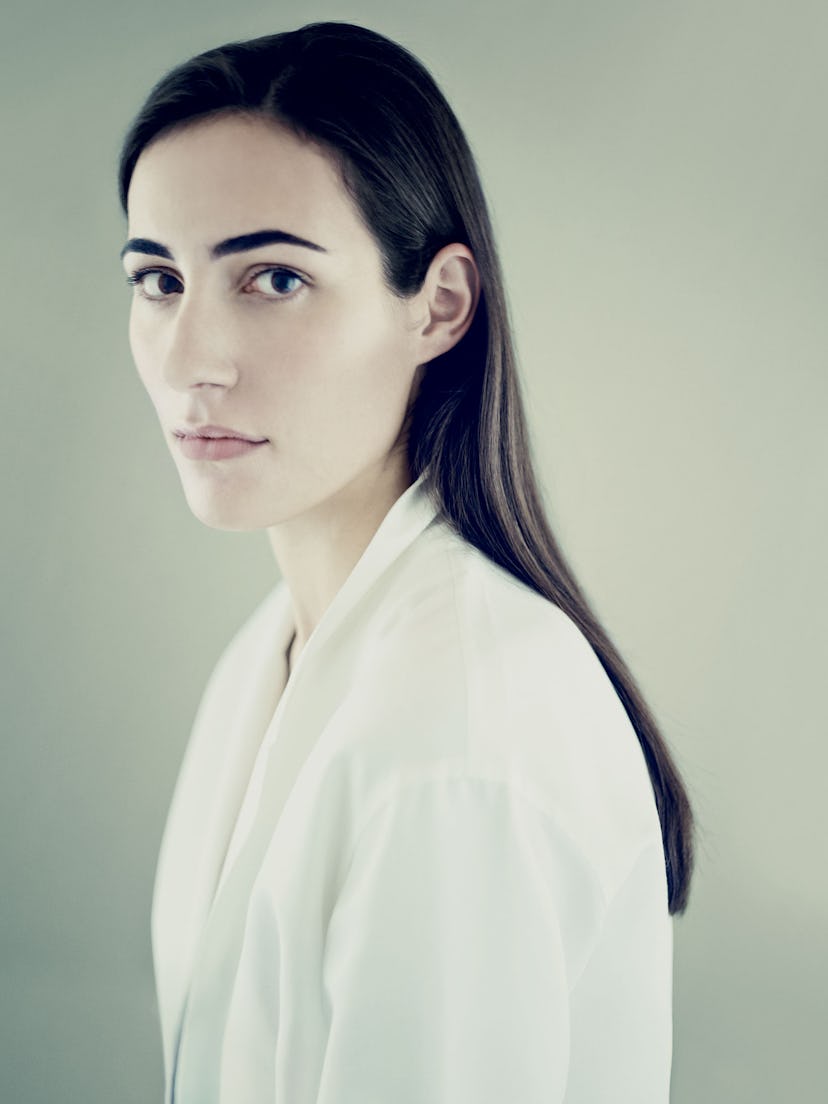Designers to Watch: Spring 2015

Dauphin Paris’s Place Vendôme is ground zero for French haute joaillerie, home to Boucheron, Van Cleef & Arpels, and Cartier. So it was big news when, in January, the square saw the rare introduction of a new name: Dauphin. Charlotte Dauphin de la Rochefoucauld’s collection of architectural gold pieces covered in diamond pavé debuted in early 2014, with just three rings, a pair of earrings, a cuff, and a collar that artisans had tinkered with for months to ensure it would rest perfectly on the neck and shoulders. De la Rochefoucauld, a countess by marriage, fell in love with jewelry while studying for a master’s in art history at the Courtauld Institute of Art. “I became fascinated with gold and silver, because those pieces are almost all we have left from ancient civilizations,” she says. After graduating, she began sculpting, which eventually led her to the idea of making wearable art. “Most jewelry design is meant to disappear to enhance the stone,” she says. “But I use the stones to highlight structure.”
Photograph by Paolo Roversi.
A look from Dauphin Spring 2015.
Courtesy of the designer.
Nehera We’re well accustomed by now to historical fashion brands rising from the dead. (See: Lanvin, Rochas, Balenciaga, et al.) But Nehera—which returned for spring with a collection of hand-embroidered work wear, billowy pants, and asymmetric peasant skirts—is a surprising addition to the list. Founded in the 1930s in Prague, it’s now being designed and produced in Bratislava, Slovakia, which has become an under-the-radar fashion center since factories there started producing for luxury labels. At the helm is creative director Samuel Drira, 42, a French magazine-editor-turned-stylist who has worked with The Row, Damir Doma, and Christophe Lemaire, and who was drawn to the brand’s ahead-of-its-time sensibility. “Nehera made democratic clothes, mixing urban tailoring with folkloric details, for people who couldn’t go to a couturier,” he says. Or, as Ladislav Zdút, the ad magnate who owns the label, puts it: “Nehera was an early H&M.”
Photograph by Sybille Walter.
A look from Nehera Spring 2015.
Courtesy of the designer.
Off-White Designer Virgil Abloh’s list of references is exhaustive and a little random—Raf Simons’s silhouettes, Martha Stewart’s aesthetic sensibility, obscure Asian skate brands. But then again, Abloh spent the past decade working as the creative right hand to Kanye West, hip-hop’s premier polymath. His first foray into fashion came in 2012 with a clothing collection–cum–art project called Pyrex Vision, for which he screen-printed on flannel shirts from Ralph Lauren’s Rugby brand. The following year, he launched Off-White—which aims to fill the gap between luxury and street wear—for men and, in 2014, branched out into women’s. Spring is all about—wait for it—Nebraska. “I wanted to create an idea of something lost in the middle that hardly anyone knows about,” says the Illinois native. The result: a Great Plains fantasy filled with lace T-shirt dresses, varsity jumpsuits, and puffy parkas.
Photograph by Mark Vassallo.
A look from Off-White Spring 2015.
Courtesy of the designer.
Rene In an effort to make clothes that feel as though they’ve “been around for generations,” the Frankfurt-based designer René Storck looks to fashion icons past. From Madeleine Vionnet he got the idea to use, he says, “colors found on a woman’s body”—flesh tones; hair, lip, and eye colors—and to cut silhouettes from a single piece of fabric. His tailored dresses in gray wool and linen chambray, meanwhile, give a nod to Claire McCardell. But it was his mother and grandmother who truly shaped his sartorial gestalt. “There were always sewing machines at home,” says the 46-year-old. “And by the time I was 10, my grandmother had taught me how to knit a perfect Norwegian sweater.” Storck did a short stint as an assistant designer at Admont, a traditional German label, before launching René Storck, in 2001. After splitting with his business partners, he relaunched as René two years ago. The collection— which, for spring, includes a blousy drawstring sundress in Swiss cotton poplin, a cashmere bathrobe coat, and a floor-sweeping skirt in washed duchesse satin—is almost entirely made in Germany. “I am very German,” Storck says. “I believe elegance begins with comfort.”
Photograph by Axl Jansen.
A look from Rene Spring 2015.
Courtesy of the designer.